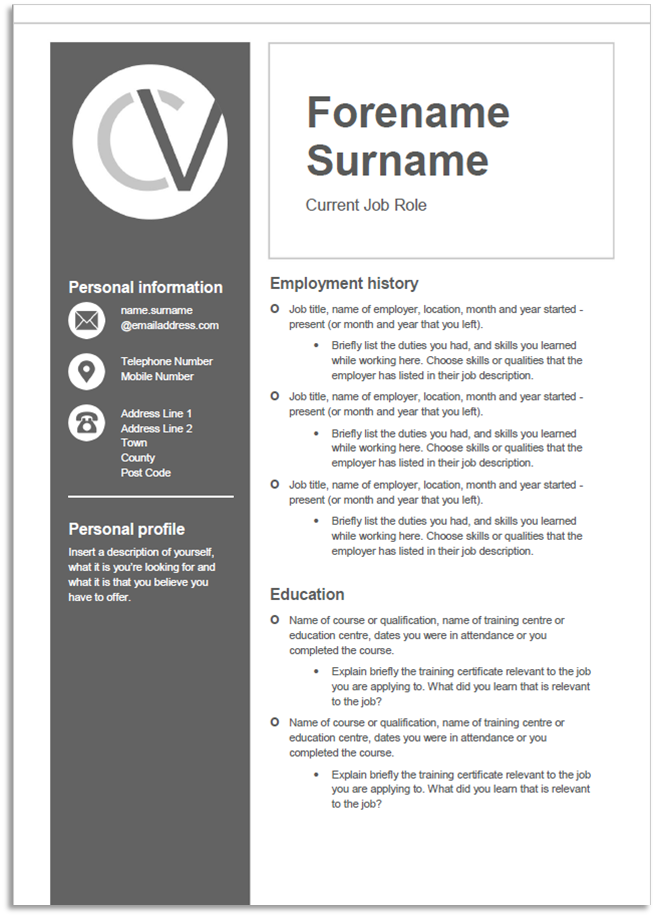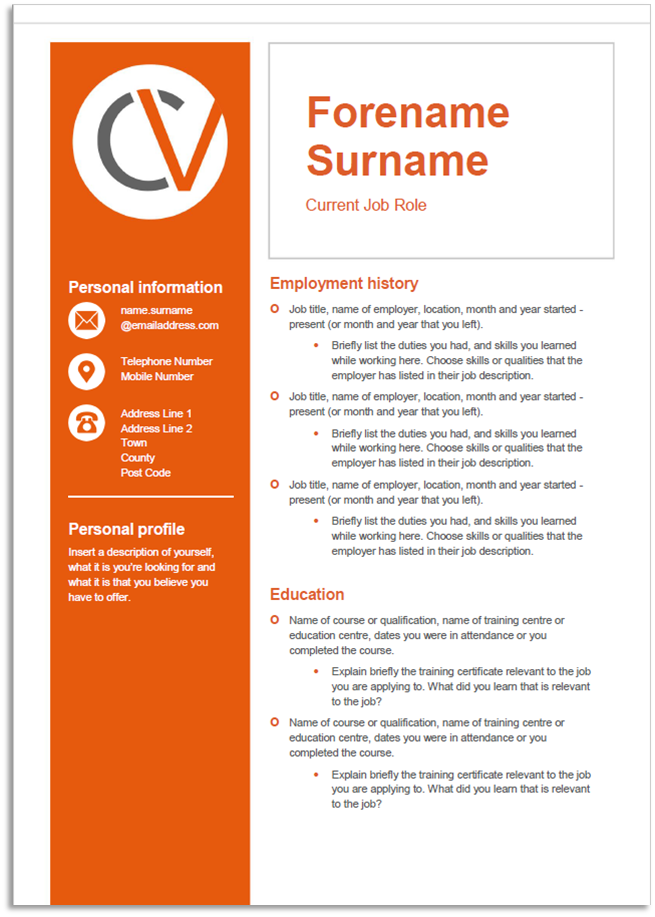Writing a CV can be stressful, where should you start? How much information should you include? How should it be structured?
Although a CV should be tailored for the job your applying for, our top tips below, outline some basic rules that everyone should follow when writing their CV.
1. Get someone to read over your CV
Before sending your CV to a potential employer have someone sense-check your CV. If you know someone who works in a similar role or company to the job you’re applying for they may make useful critics. But don’t worry if not. Someone who has good English reading and writing skills would be great to check for any small mistakes.
A second pair of eyes is important to ensure you present yourself in the best light from the start. You may have spent a long time searching for the right job and crafting your CV, it would be a shame for something like a spelling or grammar mistake to stop you getting an interview.
2. Tailor your CV to the role
If you are applying to different types of jobs, you will need to tailor your CV for each one. Start with your basic CV, then save a copy that is for one group of similar jobs, eg. cleaner jobs, and send this to the relevant employers. Then save another copy, and tailor it to another group of jobs, being sure to highlight the most important skills and experience for that role on this reason. The basic information and work history will still be relevant, and you will probably find that your transferable skills like good communication, organisation and team work, will still be important to include across many roles.
3. Work experience vs. education
It is generally up to you whether to put work experience first, or your education history. It’s normally best to put education first if you haven’t been working for more than a few years or have just finished school or college. Similarly, if your last jobs are less relevant to the role you’re applying for than your most recent education then put it first.
For example, if you’ve had a few different jobs in the retail sector, but have just done a lorry-driving course and are applying for a role in the transport sector, then put it first in the education section.
You are choosing what is the most important piece of information for a potential employer to read first. It’s normally best to then put all of your education, followed by your work history.
If you’ve had lots of jobs but only some are relevant, then it is possible to have your first section as ‘relevant work experience’, followed by education, and then ‘other work experience’ which briefly outlines the rest of your work history. Employers like to see what jobs you’ve been doing, ideally without unaccounted for gaps but you’re making it easier for them by putting the most relevant ones together at the top of your CV.
4. Use plain language that’s easy to understand
In general, it’s best to use everyday language when writing your CV. If there are terms that are particular to your sector and will be understood by the person reading your CV then that isn’t going to be a problem. But be wary of using jargon not everyone will understand and of trying to use lots of words when one word is just as good.
5. Use this checklist
Before sending off your CV to an employer, it’s important to make sure all of the information is correct and there aren’t any mistakes. Here is a final checklist to go through just before you send your CV in. So make sure:
- Your name, phone number, email address and personal details are all spelt correctly – a wrong phone number could mean you don’t get the call for an interview invite
- This is the most up-to-date version of your CV. It should have your work history right up until when you are sending it
- The font is all the same colour and size (unless you want headings to be larger, in which case make sure all the headings are the same as each other, and the rest of the text is the same smaller size) –inconsistent formatting or an unusual font can be off putting to most employers, so don’t make it hard for them to read
Put the tips into practice, download our free CV template below or read specific advice for the job you're applying for with our tailored CV templates here.





